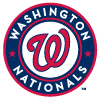This article is part of our The Z Files series.
Crash Davis may feel strikeouts are boring and fascist and plead for more groundballs, but like Nuke LaLoosh, today's pitchers disagree as there are more "strike three" calls than ever. Last week, I dug into where the strikeouts are coming from and found the following:
- relievers still fan hitters more frequently than starters, but starters are closing the gap
- after a couple of years with declining home field advantage, strikeouts are back up at home
- velocity and spin rate of four-seam fastballs are up
- the K% for breaking pitches hasn't increased much, but the use of the curve and slider is greater
- relatively speaking, strikeouts on off-speed stuff have increased more than on heat
- strikeouts are up in the lower, middle and upper third of the zone, with the largest increase in the upper third
- curiously, strikeouts on high two-seamers and hard sinkers have increased at a greater clip than high four-seamers
- despite their increased effectiveness, at least in terms of strikeouts, fewer sinking fastballs are being thrown up in the zone
- more off-speed and breaking pitches are being thrown in the upper third with curves and sliders especially effective at inducing many more strikeouts
- strikeouts on splitters are way up, but overall, the pitch is used just a tad more than 1% of the time
This week, I have identified 10 pitchers whose early season strikeout rate far exceeds expectations. Each will be dissected in an attempt to answer the question, "Will they be able to maintain an elevated
Crash Davis may feel strikeouts are boring and fascist and plead for more groundballs, but like Nuke LaLoosh, today's pitchers disagree as there are more "strike three" calls than ever. Last week, I dug into where the strikeouts are coming from and found the following:
- relievers still fan hitters more frequently than starters, but starters are closing the gap
- after a couple of years with declining home field advantage, strikeouts are back up at home
- velocity and spin rate of four-seam fastballs are up
- the K% for breaking pitches hasn't increased much, but the use of the curve and slider is greater
- relatively speaking, strikeouts on off-speed stuff have increased more than on heat
- strikeouts are up in the lower, middle and upper third of the zone, with the largest increase in the upper third
- curiously, strikeouts on high two-seamers and hard sinkers have increased at a greater clip than high four-seamers
- despite their increased effectiveness, at least in terms of strikeouts, fewer sinking fastballs are being thrown up in the zone
- more off-speed and breaking pitches are being thrown in the upper third with curves and sliders especially effective at inducing many more strikeouts
- strikeouts on splitters are way up, but overall, the pitch is used just a tad more than 1% of the time
This week, I have identified 10 pitchers whose early season strikeout rate far exceeds expectations. Each will be dissected in an attempt to answer the question, "Will they be able to maintain an elevated strikeout rate?"
Alex Cobb, Los Angeles Angels 
Is the Thing back? The Thing is Cobb's changeup, often classified as a splitter. As noted above, strikeouts on splitters have exploded, though it's unclear if it is due to the few who throw one possessing an exceptional offering, or if the league collectively struggles on splitters, making it artificially better.
Cobb is following the league trend of throwing more high two-seamers with the corresponding spike in strikeouts. Overall, he's throwing fewer two-seam fastballs while relying on his splitter and curve a little more, but the fact he's using the sinking fastball up in the zone could be helping change the hitter's eye level, increasing the effectiveness of both pitches. Long term, I expect Cobb's punchouts to remain well above the initially anticipated level.
The caveat with this analysis is Cobb fits the classic "buy low" mantra, as his actual 7.16 ERA obscures the associated 2.36 FIP, 2.41 xFIP and 2.98 SIERA. That said, if Cobb's current manager has him on the block, the added strikeouts could push you to offer a little more in return than your competitors.
Dustin May, Los Angeles Dodgers 
It's no secret May's stuff would eventually translate into more strikeouts, but the dramatic increase to 37.2% thus far is startling. He's throwing a similar number of fastballs as previous seasons but he's ditched his changeup while decreasing cutter usage and relying more on his curveball.
May didn't throw many changeups to begin with, but eliminating the pitch from his arsenal increases the chances for strikeouts since the change often resulted in contact, reducing the opportunities for strike three. Curiously, his cutter is generating more strikeouts than usual but he's still using it less, at least so far. That said, perhaps less frequent usage increases effectiveness.
To be honest, there isn't much with what May is doing that syncs with the league-wide trends. This could just be a matter of a talented pitcher maturing as he gets a better feel for what works. That said, a 37% strikeout rate is due for a fall, but it will probably remain well above the level displayed in the limited 88.2 frames he amassed from 2019-2020.
Tommy Milone, Toronto Blue Jays 
Dang it, I was hoping for more. Why even include Milone? He's a 34-year-old journeyman still earning a paycheck because he happened to be born left-handed. His 4.63 ERA is unimpressive, but the corresponding 3.35 FIP, 3.05 xFIP and 2.71 SIERA are encouraging, especially if he can maintain his elevated strikeout clip. This sort of profile plays well in AL-only formats where the available starters are ratio hazards. The selfish hope was to be able to recommend Milone as a cheap stopgap.
Unfortunately, it appears Milone's early-season exploits are more happenstance than anything else. Keeping in mind his 84 mph fastball is slower than many of us drive on the Interstate, his swinging and called strike rates match last season's marks when his strikeout rate was 22.1% as opposed to his current 30.8% clip. He's throwing fewer pitches up in the zone, so he's not even taking advantage of the league's flailing away at high soft stuff.
Erick Fedde, Washington Nationals 
Over his first five outings, Fedde has posted a K% twice as high as he recorded the previous two seasons. His ERA doesn't reflect the increased dominance, but his ERA estimators are all more favorable. If there is evidence Fedde's spike in punchouts is real, he could make for an excellent pickup, particularly in formats which facilitates streaming.
Fedde's swinging strike is up 2.4% while his called strikes are up 0.7%. This is obviously encouraging, but not nearly enough to support a jump from a 12.6% K% to 25.8%.
He's no longer using a four-seamer, instead unveiling more cutters and changeups. He's throwing his two-seamer and cutter up in the zone, which could be aiding the punchouts. Meanwhile, Fedde is burying the change in the lower third 85% of the time. The change in eye level can help keep batters off balance, but it may also result in guess hitters having a better chance to guess correctly.
There is enough here to lift Fedde from a categorical avoid to someone in play with favorable matchups. The more arms at a streamer's disposal, the better the chance of success.
Jose Quintana, Los Angeles Angels 
Quintana is included in the hope there is something to justify a buy-low tag. That said, his current 26.6% strikeout rate indeed exceeds expectations. One may note he posted a higher mark last season, but it was in only 10 innings. Factor in aging and the lower dominance in 2018 and 2019 and it makes sense expectations were tempered, despite Angels Stadium being a plus park for strikeouts.
Quintana is using fewer four-seamers in lieu of added two-seamers and changeups. The jump in strikeouts is fueled by the change, but so are the extra walks. Quintana is working a little higher in the zone, but not enough to rely on in an analytical sense.
I'm a little encouraged, but it will take a home tilt against a weak offense to trust Quintana as a streamer.
Carlos Rodon, Chicago White Sox 
Health and confidence are one thing; a 37.9% strikeout rate is quite another. That said, a couple extra ticks of velocity certainly helps, but still.
The impetus behind Rodon's strikeout spike is a huge leap in swinging strikes on his four-seamer. The league average is around 11% whereas he's a bit north of 19%. One reason is he is throwing it in the upper third an inordinate 60% of the the time, compared to the league average of 35%.
Even though this information is striking (pun intended), it will be difficult to wrest Rodon from his current team, though maybe you can play up the injury risk angle. Of course, continued health is a real concern, so be careful what you wish for. That said, Rodon is combining the extra giddy-up on his heater with excellent location for superior results.
Sonny Gray, Cincinnati Reds 
I thought twice about including Gray since he's only started three games, spanning just 13.2 innings. Since I have Gray rostered on a couple of teams and am selfishly curious, here we are.
Of course, there are more concerns with Gray as his walks are up for the second straight season and he's surrendered three homers. On the other hand, he's carrying a .433 BABIP sure to regress. Once the dust settles, I'd like to know whether to expect a soft or crash landing for the inevitable drop on Gray's 15% strikeout clip.
Long story short is Gray's pitch mix is a little different, with fewer fastballs and more off-speed stuff, but in limited frames it's unclear if this will persist. That said, the spike in whiffs emanates from the curve and changeup. Granted, this is a rather boring conclusion, but I'm now more concerned about his dwindling control than the chance Gray takes dominance to a new level.
Kwang Hyun Kim, St. Louis Cardinals 
Kim has only accrued one more inning than Gray, but he's of special interest since last season's truncated schedule deprived us of the chance to see how well his stuff plays at the major-league level. Kim wasn't dominant in the KBO and was even less so last season, but Kenta Maeda is an example of someone coming from overseas who increased and maintained their strikeouts.
Kim has thrown a handful fewer fastballs, upping his slider and curve usage. When he does let it fly, he's been working higher in the zone than last season. In just three games, it's unclear if this is by design due to matchups or happenstance, but the difference is significant. However, Kim's four-seamer isn't directly generating more punchouts, but perhaps it's keeping hitters off balance so when he buries his curve and slider, the outcomes are markedly improved.
Truth be told, last season's swinging strike metrics on Kim's curve and slider were low, so some improvement could be organic, but the extent of that improvement seems to be more than regression can explain. Some is very likely opponent related as Kim has only faced the Phillies and Reds. Philadelphia fans the fourth most in the league while Cincinnati checks in with the 11th-highest mark.
Still, the fact Kim is doing something different (throwing more high heaters) lends some hope there is a tangible difference. It's still a speculative play, but Kim could provide more strikeouts than initially anticipated, and he has the luxury of working in one of the best pitching venues so he can be used as a streamer until the strikeout scenario comes into focus.
Brady Singer, Kansas City Royals 
I'm going to ignore this was written concurrently with a mini-implosion from Singer and go strictly from my notes. However, it should be noted he took a hard liner off his left heel on the play ending the second inning in his last outing, leading to what may have been a merciful early exit. Early reports say the X-rays are negative and the club hope he makes his next start.
Coming into the season, Singer profiled as a groundball guy, capable of missing ample bats to be dangerous but not dominant. His pitch mix almost mimics that of his rookie campaign with around 60% two-seamers, 35% slider and the occasional change of pace.
The main difference is... wait for it... working higher in the zone. Singer is throwing more two-seamers in the upper third while elevating more sliders into the middle third. If he was working with more velocity, I'd be more comfortable in a breakout, but with a 93-mph sinking fastball and 83-mph slider, the dominance will be tough to maintain.
It's important to point out Singer has continued to generate grounders at above a 50% clip so working higher hasn't cost him in that department. Yet.
Singer appears to be a work in progress, definitely worth monitoring, but still vulnerable to spotty outings, like the one he was enduring Friday night.
Joe Musgrove, San Diego Padres 
Musgrove's early-season returns are fascinating. He's throwing each pitch in his arsenal a bit harder with more spin. Some guys improve a pitch or two, but Musgrove's four-seamer, two-seamer, cutter and slider are all moving faster while spinning more. The intriguing aspect is he's cut way back on the hard stuff, with an increase in his cutter usage. Granted, Musgrove sits 90 mph with his cutter, not exactly Cesar Valdez territory, but it's not gas either.
Frankly, I'm not sure if there is anything actionable here as it appears we're just seeing the continued maturation of a very good pitcher, so perhaps the takeaway is don't sell high. Well, unless we're in the same league and if so, feel free to drop me a line.










